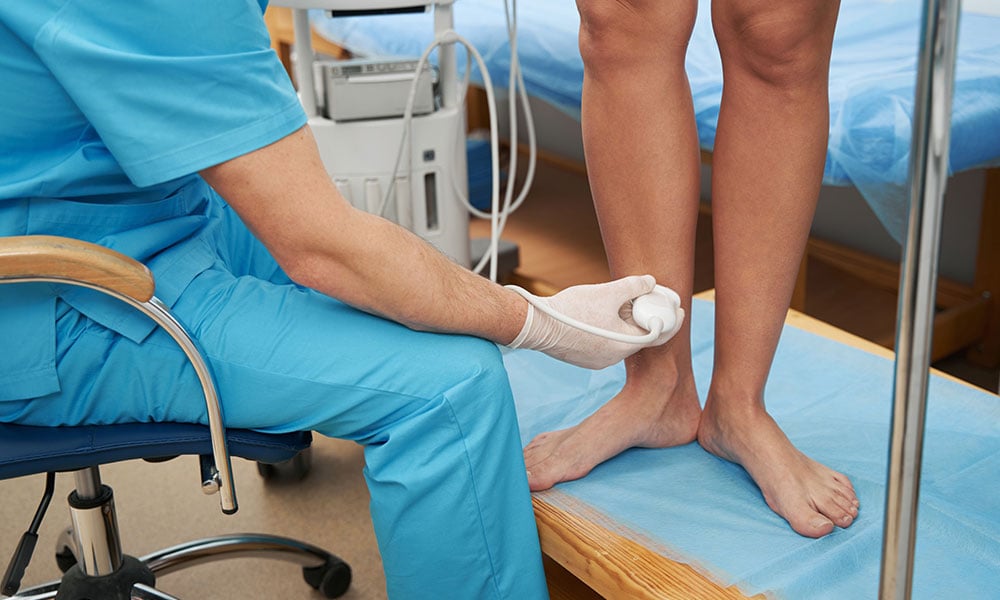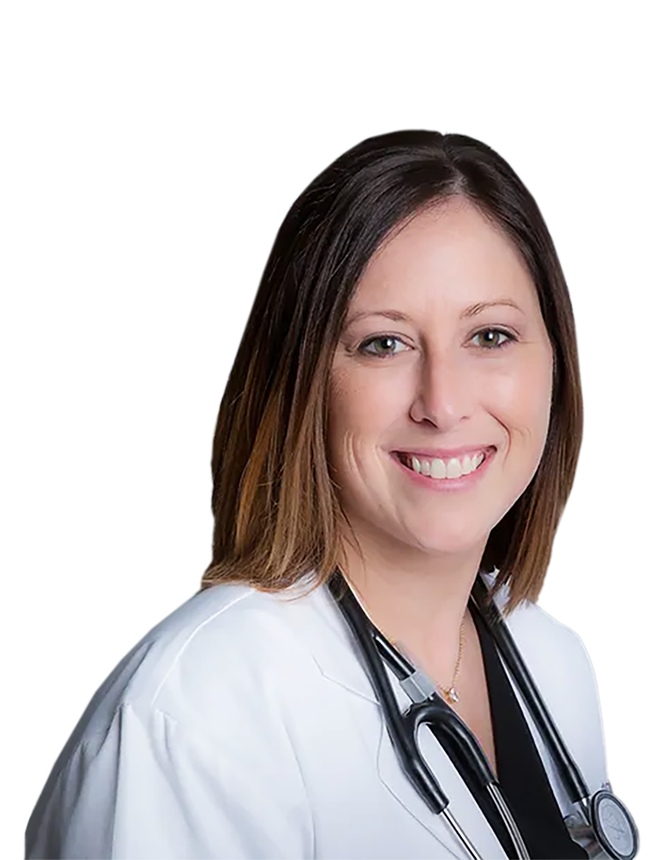Vein &
Vascular Care
Having vein and vascular issues can cause you great discomfort. Finding vein and vascular care can provide significant relief from symptoms. Cardiovascular Medicine is proud to offer a state-of-the-art vein treatment center to treat all types of venous diseases, including varicose veins.
When to See a Vein Specialist
Venous disorders can cause damage to your veins, so it’s important to seek treatment if you’re experiencing symptoms. Our vein specialists can help you understand what is causing you discomfort with thorough diagnostic testing. We are able to provide relief for those with various venous conditions, including:

Diagnostic Testing
Diagnosing venous disorders can involve many different techniques. Conditions such as varicose veins are often visible, so we begin by conducting a physical examination. Understanding the cause and extent of venous disease sometimes requires seeing how well your blood is flowing—tests such as venous Doppler ultrasound can help us get an accurate diagnosis.
Vein & Vascular Treatments
We have two main goals when treating your venous condition: alleviating your discomfort and improving blood flow. If your vein and vascular issues become severe, we are able to help. Our minimally-invasive treatment options will help you feel better and get back to your normal life within a few days. They include:
Stab Phlebectomy
What is a Stab Phlebectomy?
Stab phlebectomy is a minimally-invasive method of removing varicose veins. In this procedure, we make tiny cuts on your skin to remove the vein in sections. Usually, just a few incisions are needed to make a difference in the appearance of veins. Patients report feeling little pain compared to "vein stripping," which is a more invasive surgical procedure that often requires weeks of recovery. In contrast, a stab phlebectomy allows you to resume normal activities in 1-2 days.
A stab phlebectomy minimizes the appearance of varicose veins – twisted, bulging, and swollen veins that appear on the skin's surface. Varicose veins most often occur on the legs and feet due to the natural effects of gravity from walking and standing, though any superficial vein can develop the condition.
Over time, the extra pressure from pooling blood can damage your veins. If a vein is damaged, your blood will not flow properly back to your heart. When this happens, your vein may enlarge, leading to other problems such as swelling, skin sores, aches, and rashes. In addition to the discomfort they cause, varicose veins can be unsightly, and tend to worsen with time.
Stab phlebectomy is most effective at improving the appearance of varicose veins. To relieve pain and discomfort, it is often used in conjunction with procedures such as radiofrequency ablation (RFA) or endovenous laser therapy (EVLT). Our vein specialists can provide guidance on the most effective treatment plan for you.What to Expect
A stab phlebectomy typically lasts one hour. We make every effort to ensure you are comfortable every step of the way throughout the procedure.
On the day of your procedure, a member of our staff will escort you to an exam room and your vein care specialist will examine your legs and identify which veins require treatment. Pictures of the treatment area may also be taken for clinical documentation purposes.
Before the procedure begins, we will give you medicine to help you relax. We will use a pen to mark your area of treatment so the problem areas are clearly visible while you are lying down.
Your leg will be cleaned to avoid any infections after the treatment. Then your vein specialist will numb the area and make tiny incisions next to the vein that is being treated. Using these incisions, we remove the varicose vein in sections. Afterward, the incisions are closed, and a compression stocking or bandage is applied to the leg.
Recovery
Risks & Side Effects
Stab phlebectomy procedures are safe, but they do come with a small risk of temporary side effects.
If you are concerned about any symptoms after your procedure, contact our office right away.
Am I a Candidate?
If you have superficial veins in your legs that are twisted and bulging, you may be a good candidate for a stab phlebectomy procedure.
Varicose veins don't always have symptoms. Sometimes, the only signs of varicose veins are their bulging, swollen appearance. For some, they can cause aching or swelling legs, pain after sitting or standing for long periods, and itchiness or discoloration around the affected vein.
We diagnose varicose veins through a physical examination and imaging procedures such as a venous Doppler ultrasound, which uses sound waves to capture blood flow.
More on Stab Phlebectomy
How Do I Prepare for a Stab Phlebectomy Procedure?
When you come in for your procedure, we will ask you to follow some guidelines, including:
- Avoid wearing perfume or cologne. Deodorant is fine.
- Do not use any lotion on your legs on the day of the treatment.
- Wear loose, washable pants (sweatpants or athletic pants) to your appointment, and bring a pair of loose, washable shorts for the procedure.
- If you have compression stockings, please bring them with you for the procedure.
Possible Temporary Side Effects of Stab Phlebectomy
- Inflammation or infection at the incision site: Keeping the area clean and taking prescribed antibiotics will significantly decrease your risk of developing an infection.
- Allergic reaction to the anesthetic or sedative.
- Changes in skin color where your varicose veins were removed, but this typically goes away on its own after a short time.
- Bleeding may occur around the incisions, but this is rare. The incisions are tiny.
- Bruising is common and can last for a couple of weeks before it resolves.
- Numbness and tingling on your legs.
Factors That Can Increase Your Likelihood of Developing Varicose Veins
- Age. As we age, the valves in our legs can weaken due to pressure from blood flow. When this happens, blood can pool in your legs.
- Sex. Women are more likely to experience varicose veins due to hormones that relax vein walls, leading to weakening over time. Hormonal birth control pills can increase this risk.
- Family history. If you have had family members with varicose veins, you may be at higher risk for developing them.
- Obesity. A heavier weight will put more pressure on your veins.
- Standing or sitting for long periods of time. Staying in one position can lead to blood pooling. Regular movement can decrease this risk.
Meet Your Illinois and Iowa
Cardiovascular Physicians
CVM Locations
Insurance Providers We Accept
In Search of Care? Request a Consultation Today



